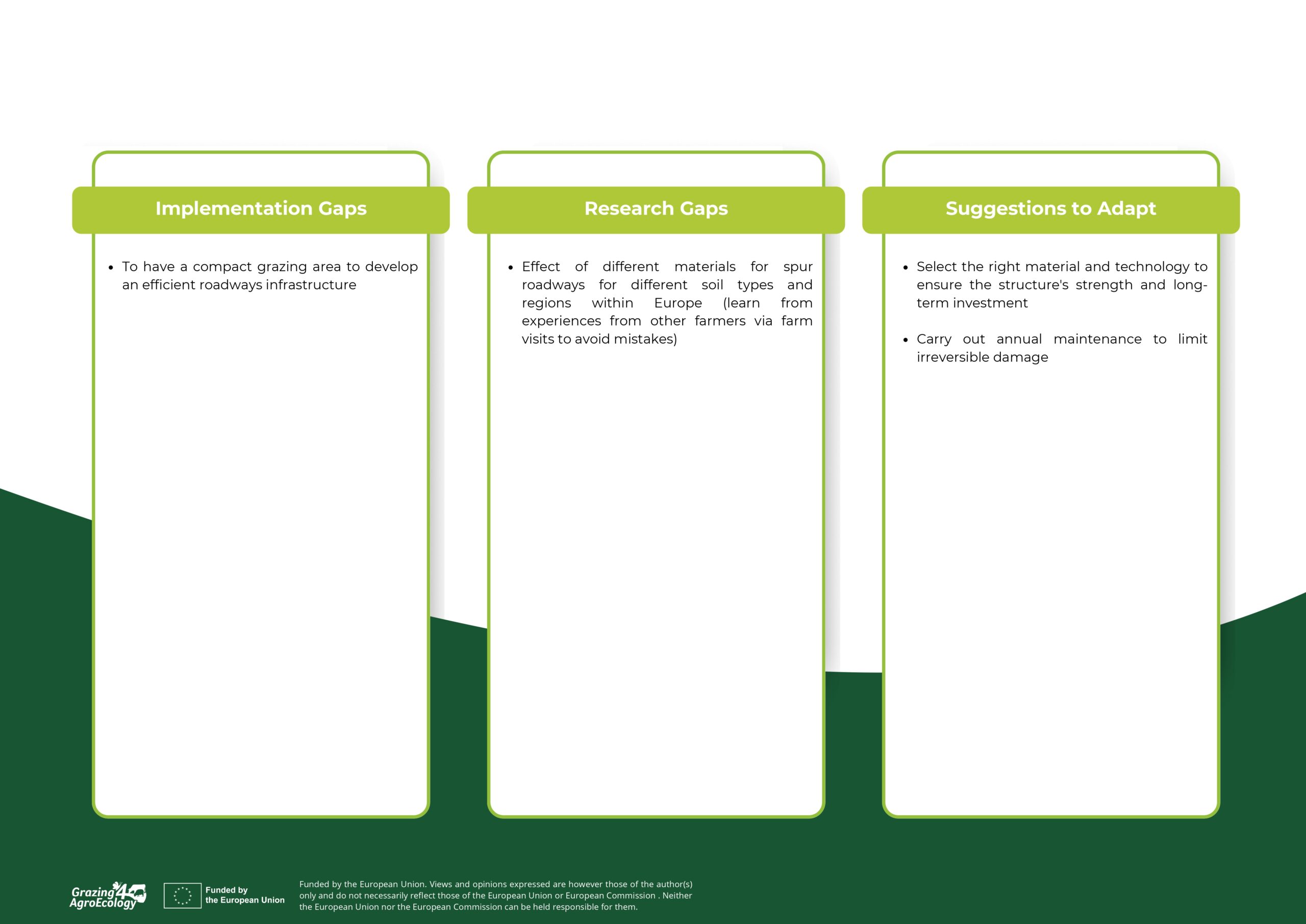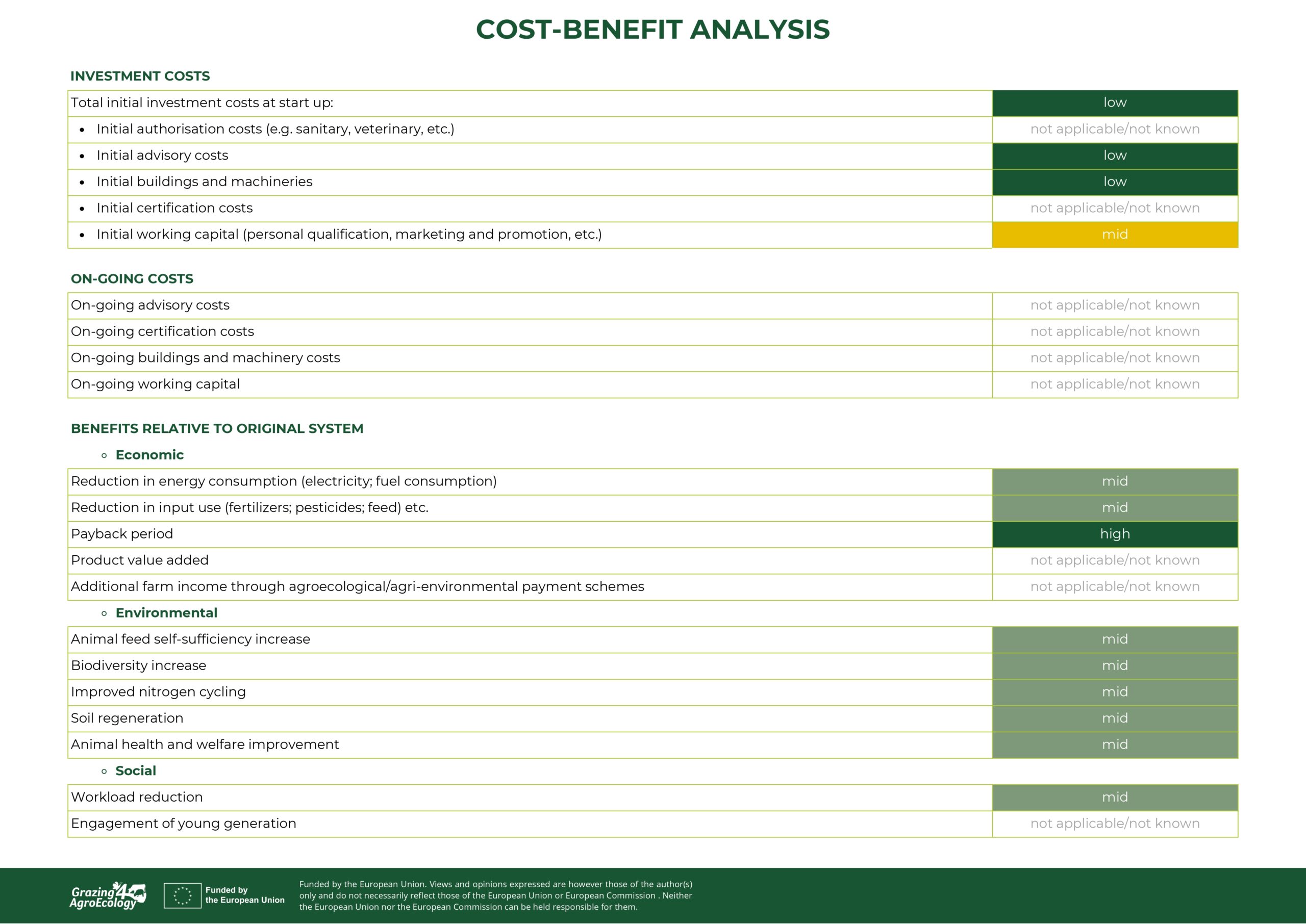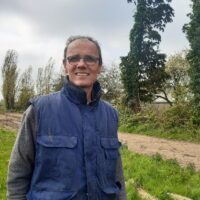Spur roadways
Description
Practice abstract
Spur roadways play a crucial role in enhancing both cow grazing and sustainability on Irish dairy farms, particularly during challenging weather conditions. By providing easier access to distant pastures, spur roadways help maintain efficient grazing rotations, ensuring that cows can move to fresh, high-quality grass without damaging the pasture or compacting the soil. This effective use of spur roadways not only supports optimal milk production by enabling cows to graze on well-managed paddocks but also reduces the need for supplemental feed, which lowers both costs and the farm’s environmental impact. In addition, spur roadways contribute to improved cow welfare and farm sustainability by facilitating increased days at grass and reducing environmental degradation, making them a valuable investment for long-term farm productivity.
Spur roadways are especially beneficial during early spring and late autumn, when conditions are typically wet and paddocks are more vulnerable to damage. These roadways are narrow, usually the width of a single cow, and allow cows to access different sections of a field, minimizing damage to the pasture. Installed off the main cow roadways, spur roadways are primarily used in wet grazing conditions when traditional routes may be impassable.
James Barber, a spring-calving, pasture-based dairy farmer in Co. Laois, has recently upgraded his grazing infrastructure by incorporating multiple spur roadways. With 7 spur roadways now in place, James can access 21 paddocks, which has allowed him to continue grazing into the autumn and early spring, when many other local farmers are feeding silage. The system James has implemented enables him to divide paddocks into multiple grazing areas, using 12-hour grazing breaks to prevent cows from re-accessing areas that have already been grazed. The spur roadways are fenced with wooden stakes and feature multiple access points, allowing for easy movement of cows in a single file. Designed to be 3 feet wide, the roadways were constructed by first removing 6 inches of topsoil, followed by creating a base layer using material sourced from James’s own farm. The surface was then formed using pencil stone, and a vibrating roller was employed to compact the material into a solid, durable roadway.
Context profil





Additional information
| Main domain of innovation | Improvement of nutrient cycle |
|---|---|
| Agroclimatic area | Atlantic north |
| Climate | Moderate rainfall |
| Soil Type | Loarm |
| Management | Pasture dairy |
| Technical | Computer-based |
| Finance/investment | Low |
| Market | Local-rural |
| Social | Full-time farmer |




